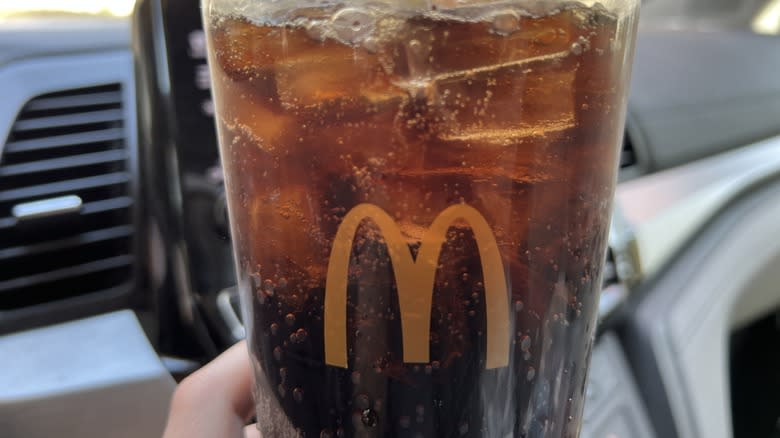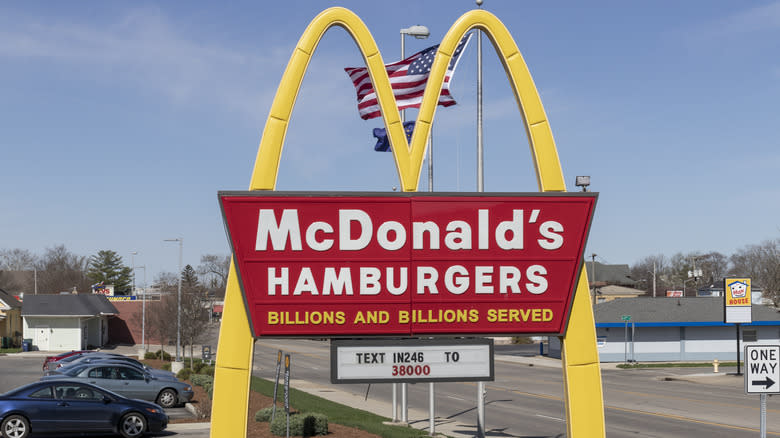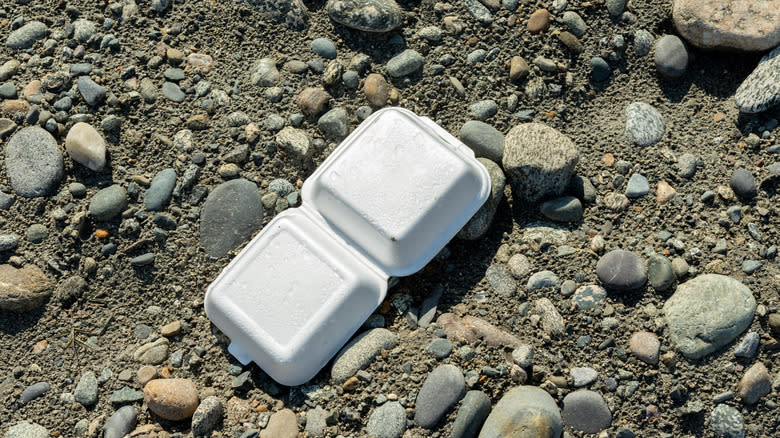How McDonald's Styrofoam Cups Caused A Little Chaos For Sweet Tea Lovers

It seems like a rather minor change, but McDonald's former Manager of Culinary Innovation Mike Haracz states in a TikTok video that the restaurant "lost millions and millions of dollars" when it stopped using cups made from Styrofoam. The change hit southern sweet tea lovers particularly hard, who were upset that their beverages didn't remain chilly for as long when poured into cups made from other materials, in addition to being unhappy with the condensation that would form on the exterior of the cup.
McDonald's actually first began phasing out Styrofoam, aka polystyrene foam, in 1990. Up until that point, Big Macs and other sandwiches from the chain were often served in containers made from the material. However, the restaurant continued to use the material for its cups and other forms of packaging until about 2018, although the initial announcement was made two years earlier. While beneficial from an environmental perspective, McDonald's did incur the wrath of its biggest fans after the change occurred.
Read more: The Ultimate American Fast Food Restaurants Ranked
Customers Not Happy With The Switch To Environmentally Friendly Cups

Sweet tea is a southern staple, and the controversy surrounding McDonald's and its Styrofoam cups proves that people can get a little fanatical about the beverage. According to Haracz, the lack of Styrofoam cups took a big bite out of sweet tea profits in the south, and some commenters were apparently aggrieved by the switch. As stated by one person, "Yes, I loved their large Styrofoam cup. Texas here, it helped keep the drink cold." Another commenter went as far to cease purchasing beverages from the chain after it axed Styrofoam packaging.
Of course, lots of people were supportive of the move in the interest of environmental preservation, fortunately contradicting Haracz's claim that "a lot of people still do not care about the environment." And when you take a moment to consider the many ill-effects of Styrofoam, it's hard to rally for its return to McDonald's or any other establishment.
How Bad Is Styrofoam Really?

People were so incensed by McDonald's decision to get rid of Styrofoam cups that a Change.org petition was launched in 2017 regarding the matter. Those in favor of the material stated that it keeps drinks cooler for a longer period while also resisting sweating, unlike cups made from plastic. However, these minor complaints pale in comparison to the environmental effects of Styrofoam.
Consider that items made from polystyrene foam can remain intact for centuries, if not longer. Animals, such as birds, often eat the material and experience substantial harm as a result. Also, Styrofoam can't be easily recycled. And when it is, it's converted into a form of fuel that increases the greenhouse gases in the environment. Research indicates that the styrene within polystyrene foam might be a carcinogen and could increase the cancer risk among humans as a result. Based on these factors, banning Styrofoam is a no-brainer.
McDonald's also pledged to limit the use of other forms of plastic in 2022, per the fast food restaurant's website. The chain's "circular clear cups" consist of recycled materials and can be easily recycled themselves (unlike Styrofoam). While the cups are currently only being used in Georgia, the restaurant has stated that it hopes to exclusively use environmentally friendly materials within two years.
Read the original article on Daily Meal.

